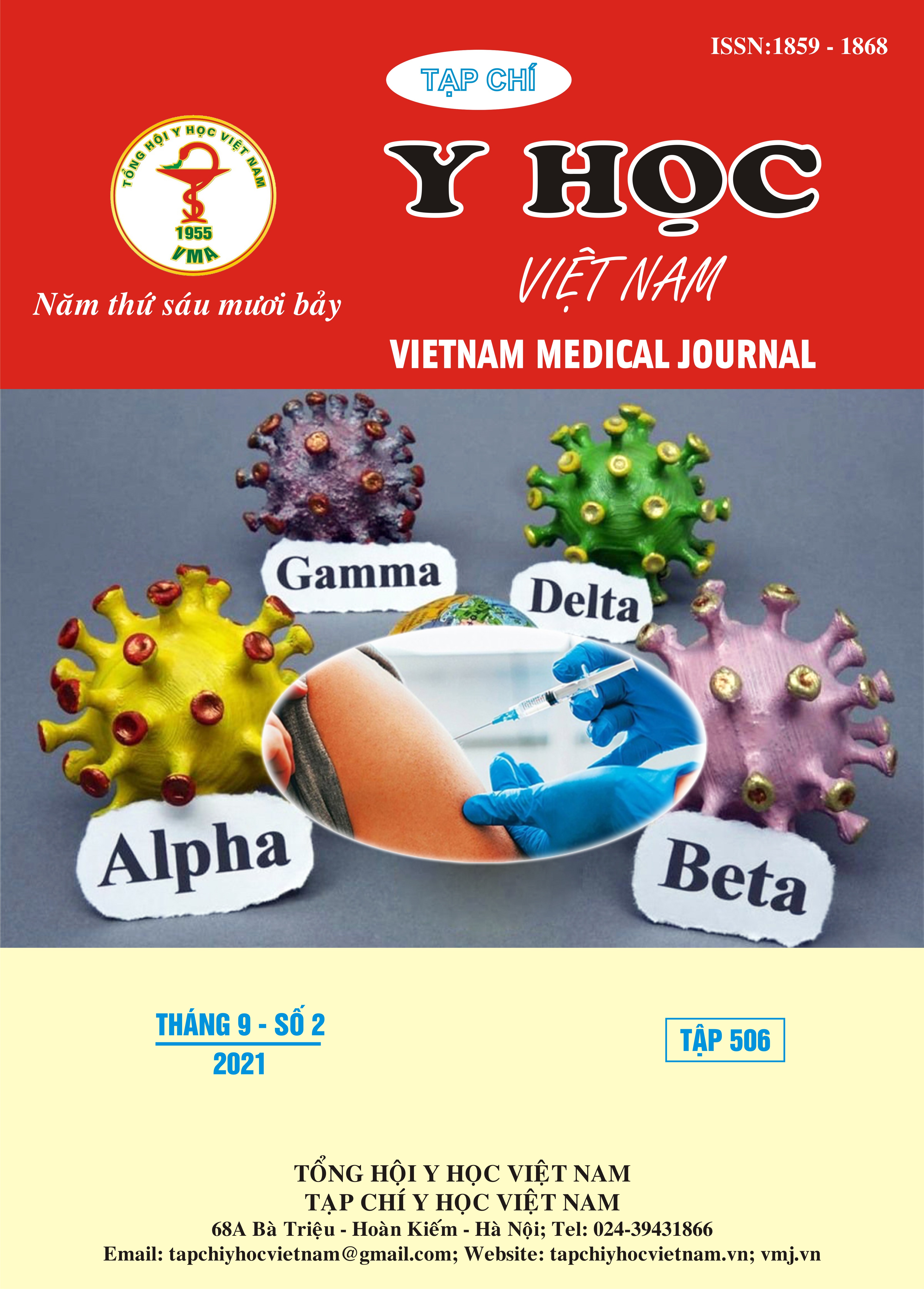HARD TISSUE CHARACTERISTICS OF CLASS II DIVISION 1 MALOCCLUSIONS WITH FOUR PREMOLARS EXTRACTION BY EVALUATE PRE-TREATMENT LATERAL CEPHALOMETRIC RADIOGRAPHY
Main Article Content
Abstract
Objectives: To evaluate the pre- treatment cephalometric characteristics of hard tissue of class II division 1 malocclusions with four premolars extraction. Materials and method: Descriptive study of 31 patients (21 females, 10 males) diagnosed with class II division 1 malocclusion with four premolars extraction in School of Odonto- Stomatology and National Hospital Of Odonto- Stomatology to June 2021 were recruited. Results: The average of age was 18,65 (range in 11 to 34). Normal SNA angle 83,74 ± 3,400. Retruded mandibular and Pogonion point with SNB angle 77,13 ± 3,710 and NPog- FH angle 85,23 ± 3,750 were less than normal range. Mandible angle was greater showed a generalized tendency towards a more vertical skeletal growth pattern. The greater ANB angle 6,580 and Wits appraisal 2,73 mm. Severe bimaxillary proclination in relation to anterior cranial base, palatal plane and mandible plane. Interincisal angle 109,79 ± 8,080 was less than normal. Large overjet was 5,75 ± 3,08 mm. Conclusions: In this study, class II division 1 malocclusions with four premolars extraction have normal maxillary- cranial base relationship with normal SNA angle, retruded mandibular and chin with less SNB and NPog- FH angles. The sample showed a generalized tendency towards a more vertical skeletal growth pattern. Greater ANB angle and Wits appraisal showed anterior- posterior discrepancy. Bimaxillary proclination with smaller interincisal angle and large overjet.
Article Details
Keywords
hard tissue, class II division 1 malocclusion, cephalometric, premolar, extract
References
2. Lim H-J, Ko K-T, Hwang H-S. Esthetic impact of premolar extraction and nonextraction treatments on Korean borderline patients. American Journal of Orthodontics and Dentofacial Orthopedics. 2008;133(4):524-531.
3. Guo Y, Han X, Xu H, Ai D, Zeng H, Bai D. Morphological characteristics influencing the orthodontic extraction strategies for Angle’s class II division 1 malocclusions. Progress in orthodontics. 2014;15(1):1-7.
4. Kuroda S, Yamada K, Deguchi T, Kyung H-M, Takano-Yamamoto T. Class II malocclusion treated with miniscrew anchorage: comparison with traditional orthodontic mechanics outcomes. American journal of orthodontics and dentofacial orthopedics. 2009;135(3):302-309.
5. Sivakumar A, Nalabothu P, Thanh HN, Antonarakis GS. A Comparison of Craniofacial Characteristics between Two Different Adult Populations with Class II Malocclusion-A Cross-Sectional Retrospective Study. Biology (Basel). 2021;10(5):438. doi:10.3390/biology10050438
6. Fushima K, Kitamura Y, Mita H, et al. Significance of the cant of the posterior occlusal plane in Class II division I malocclusions. The European Journal of Orthodontics. 1996;18(1):27-40.
7. Staley RN, Stuntz WR, Peterson LC. A comparison of arch widths in adults with normal occlusion and adults with Class II, Division 1 malocclusion. American journal of orthodontics. 1985;88(2):163-169.
8. Pancherz H, Zieber K, Hoyer B. Cephalometric characteristics of Class II division 1 and Class II division 2 malocclusions: a comparative study in children. The Angle Orthodontist. 1997;67(2):111-120.


